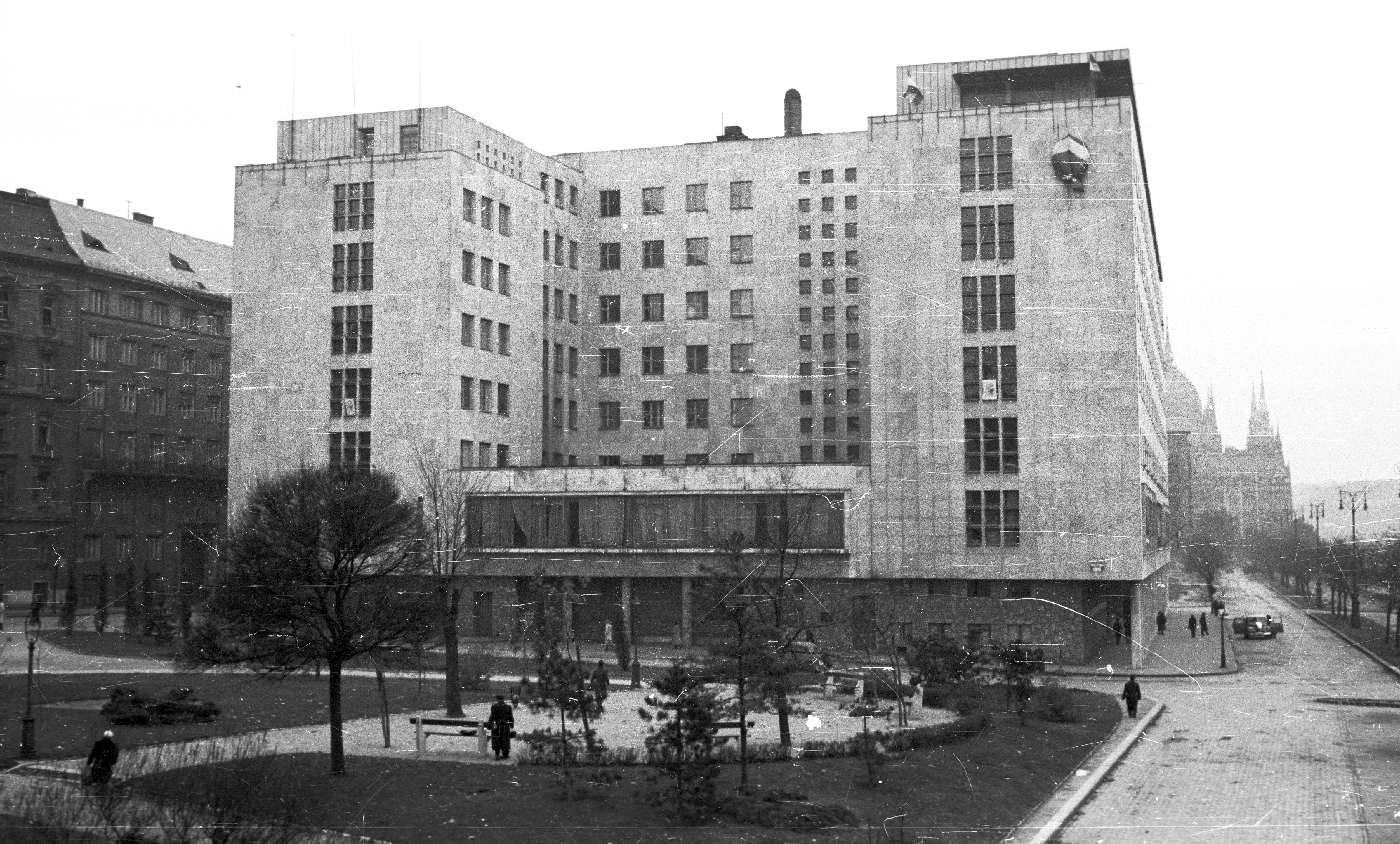In 1945, the Budapest Police Main Command Political Department was created, first with the primary task of capturing Hungarian war criminals and later to arrest “enemies” of the “people’s democracy.” This secret police was under communist control, and it gradually became increasingly incompetent. In 1946, the Hungarian State Police State Protection Department was established by Interior Minister László Rajk. This organization became the State Protection Department of the Ministry of the Interior (which was always under communist rule after 1945). In 1949, the independent State Protection Authority was created by the communist party. This political police perpetrated acts of state terror during the Rákosi period. The political prisoners were held in concentration camps (Recsk, Tiszalök, Kistarcsa, Kazincbarcika, etc.), and many people were deported (former aristocrats, members of the clergy etc.) to the Hortobágy (a flatland region in eastern Hungary). The State Protection Authority also took part in the staging of show trials (the trials of Mindszenty, Rajk, Grősz, etc.). In 1953, the Soviet dictator Joseph Stalin died, and the reform communist Imre Nagy became the Prime Minister of Hungary. Under Nagy’s first government from 1953 to 1955, the ÁVH was reintegrated into the Ministry of the Interior. The hated political police was totally fragmented during the Revolution of 1956.
The Decree Law No. 35/1956 of 30 December 1956 put investigations on alleged enemies of state under the competency of the police. The II/5. Division of the Ministry of the Interior was responsible for the “prevention internal reaction.” The final organizational form of the Hungarian communist secret police was established in 1962 by a decree of the Political Committee of the Hungarian Socialist Worker’s Party. The aim was to eliminate the rest of the former ’totally prevention.’ New people came to leading positions in the Ministry. A new system with Main Divisions and Sub-Divisions created. The Main Division III addressed the various tasks of maintaining state security. Division III/I was the Intelligence Services, Division III/II was the Counter Intelligence Services, and Division III/III was the so-called Counter Internal Reaction Division. Division III/IV was the Counter Military Services and Division III/V was the Operative Technical Division. In addition to the central organizations, there were also political departments at the county police headquarters as the local organizations of the Main Division. The Home Secretary held the right to approve the main actions. The Main Division III could do secret surveillance, bug phone conversations, homes, and workplaces, and do secret perquisitions. The Main Division III could control the mail (except the correspondence of leaders in the party and the government). In 1968, more than 6,000 people were under observation. In 1971, the political police monitored approximately 3,400 people. In the 1970s, one-third of the “enemies” were people who had taken part in the Revolution of 1956. The other two-thirds were people suspected or accused of conspiracy and provocation. In 1963, the political police had 8,433 agents. In 1989, there were 219, but there were also 1,056 coworkers and 7,203 secret commissioners who helped the Ministry of the Interior in the last year of socialism.
The Main Division III ceased to exist after the so-called Duna-gate scandal. The Alliance of Free Democrats and the Alliance of Young Democrats held a press conference on 5 January 1990 to release evidence that members of the state security organisation had collected private information on a number of anti-communist people after the fall of the Hungarian socialist regime. Home Secretary István Horváth had to resign after the scandal.

